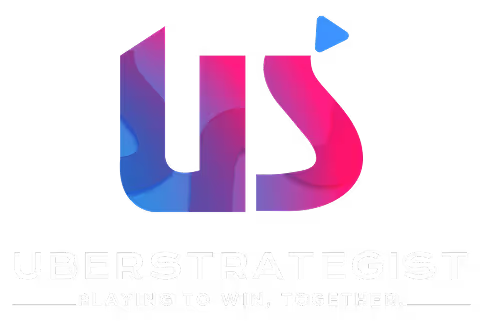7 Secrets for Creating a Steam Page That Sells
Posted in:
Video Game PR
Video Game Marketing
You’re developing your first game, and you’ve chosen Steam as a platform for release. Excellent choice! Steam has over 62 million daily active users, making it an ideal channel to boost exposure, fans, and sales. But to make the most of the site, you’ll want to use these 7 secrets to creating a Steam page that sells!
7 Secrets for a Killer Steam Page
After following the instructions for Joining the Steamworks Distribution Program, it’s time to set up your Steam page. You’ve never done this before, so you’re going to need some help.
Steamworks has documentation to help you set up your Steam page, but that information is primarily procedural. To set up a Steam page that sells, you’ll want to get strategic about everything you do.
As experts in video game PR, we know all of the best secrets for creating a Steam page that will boost exposure, and we’re sharing our top tips with you here.
1. Publish Your Steam Page the Moment You Announce
One question we get from developers is: when is the right time to publish my Steam page?
From years of industry experience, the best time to publish your Steam page is the moment you announce your game. With the ‘Coming Soon’ option, developers can create a page well before the release date to let people know it’s coming and build excitement around it.
Announcing your game is also the perfect time to invest in a video games PR agency to help you achieve the biggest impact, whether editorially or through influencer outreach.
2. Make Use of Wishlists
Once your page is live, players may add your game to their ‘wishlist,’ which is essentially a bookmark to remind them about your game. Using Wishlists allows you to build a list of prospects interested in your game before it is launched.
According to Steam, Wishlists affect your game’s visibility on the platform:
Wishlists can be an important factor in determining where your game appears on Steam. After a user has wishlisted your game, your game may appear in different featured sections, with a visual reminder that the game is on their wishlist. Prior to launch, your game may appear on lists featuring upcoming games according to various filters, such as release date, popularity, tag, or other categories. Additionally, when your game launches and goes on sale, Steam may send reminder emails or other notifications to users that have wishlisted it.
Here at Uberstrategist, we’ve noticed that the impact of Wishlists has declined over time. While initially they meant more sales, now that 50-100 games are added to Steam every day, visibility is limited.
That said, Wishlists can help your sales and should be part of your marketing strategy. Aim for around 50-100K wishlists by launch for an indie title to stand out. Those upper-end numbers are hard to achieve, but patience and targeting will help, as well as press and influencer outreach during your campaign.
3. Create UTMs for Tracking Traffic to Your Steam Page
As you make your announcement and send people to your Steam page, make sure to create UTM links. With UTMs, you can track where that traffic has come from to understand your best marketing channels and focus your efforts there.
UTMs also enable you to retarget people who visited your page—for example, you can show ads about your video game when it is officially released to those who visited the page beforehand.
Some traffic will come from the discovery queue, but most will be editorial, advertising, or influencers. Oh, and there will be some bots – potentially a large amount, so make sure to look at the breakdown of traffic in your Steamworks panel.
4. Select a Standout Main Title Image
The importance of your main title image cannot be understated. Spend time (and, where possible, money) designing a standout image that features elements of your game and the logo. The more intriguing your image, the more interaction you’ll get, and the more click-through you’ll achieve with traffic that Steam’s algorithm is sending your way.
When choosing an image, think about what will resonate with your intended audience. Choose artwork that tells the customer something about your game or gives them some sense of the gameplay. While you should include the name/logo of the game, avoid adding other text or quotes.
Make sure to size your image right too—616x353 pixels.
The main title image (main capsule) is arguably the most important image on your page, but there are other visuals you can include on your page. Familiarize yourself with them here.
5. Choose Your Page Text Carefully
The key to Steam text is to ensure the short description gets key elements of your game across to a player quickly.
- Use Concise Language: Your goal is to give a top-level overview of your game so potential customers understand the fundamental pillars. What are the main facts about the game that you must convey for someone to understand the story and gameplay?
- Consider Tone: When you consider tone, you are thinking more about the emotions you want to convey. Use words that give the reader a sense of what they will feel as they play your game, and words that will bring the game to life for them.
- Communicate Your USP (Unique Selling Proposition): With dozens of games coming out every day, why should someone play yours specifically? Your USP is the essence of what makes your game better than others in your genre. Are you an RPG? If so, what does your game do that’s new or unique, or does it have a setting or mechanic that makes it stand out?
6. Include Tags to Increase Search Visibility
Tags are important because creating a Steam page that sells requires your game to be noticed first!
Tags help Steam users learn more about your game and find it in search. Tags also help Steam understand your game and determine where it should be displayed to customers.
Using the Steamworks Tag Wizard, developers can define up to 20 tags and get suggestions of other applicable tags.
Some tags to choose from include:
- genre and subgenre
- visual properties
- themes
- moods
- features
You can find an overview of Steam’s tag features here and documentation for developers here.
7. Add a High-Impact Video Trailer
In most cases, when a person enters your page, the first thing they will see is the trailer. While the temptation might be there to create Hollywood’s next blockbuster with a cinematic trailer, players always prefer to see what your gameplay offers. Some tips for creating a good trailer include:
- Make an Impression Early: The prospect may only watch the first 10 seconds of your video, so catch their attention within the first few seconds.
- Keep It Short: The general rule of thumb is that trailers should be no longer than a minute.
- Keep It Fast-Paced: You want to maximize the time in your trailer to show the viewer many aspects of your game and get them excited to play.
- Make It Structured: Your trailer should be an orderly depiction of your game, not random video clips sewn together. To keep it structured, start with the big picture and then work your way into the details before ending with the video title and a CTA (buy now, add to wishlist, etc.).
In the end, a Steam page will only be as effective as your overall PR and marketing strategy. If you’re not clear on how to formulate your video game launch strategy, make sure to speak to a PR and marketing agency that can help you create the assets that will make your game stand out to the press and influencers. Our firm belief is that every launch strategy should include a combination of publicity, promotion, and partnerships for maximum success.
Releasing your first game is a huge accomplishment, and the success of your first launch can set your brand up for success in the future. Use these tips to create your first Steam page strategically, and you’ll be off to a great start.

.avif)








